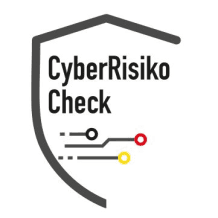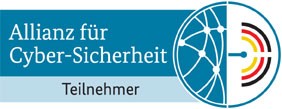What is Cyber Threat Hunting?
Cyber Threat Hunting is the proactive approach to identifying security threats in a network before they can cause harm. It is not only about responding to alarms and incidents but actively searching for potential threats that may have gone undetected.
Why is Cyber Threat Hunting Important?
In times when cyber attacks are becoming more sophisticated, traditional security management is often no longer sufficient. Attackers can move undetected in the network for a long time and cause significant damage. Threat hunting aids in tracking down these hidden threats and neutralizing them in time.
Typical Threat Scenarios
❌ Phishing Attacks: Often the entry point for malware.
❌ Insider Threats: Employees or partners may unintentionally or intentionally disclose information.
❌ Zero-Day Exploits: Vulnerabilities without available patches that are actively exploited.
❌ Advanced Persistent Threats (APTs): Long-term attacks where attackers hide in the network.
The Phases of Cyber Threat Hunting
1. Hypothesis
A threat hunter begins by formulating a hypothesis about possible threats and their potential impacts. These assumptions are often based on previous experiences or known attack techniques.
2. Data Acquisition
Once a hypothesis is formulated, the data acquisition process begins, utilizing network solutions, log files, and other sources to gather relevant information.
3. Data Analysis
Using state-of-the-art analytical methods and algorithms, the collected data is analyzed to continuously identify anomalies or known signs of compromises.
4. Investigation and Response
Once a threat or anomaly is detected, the teams respond promptly with appropriate countermeasures to minimize risks.
Effective Strategies and Tools
✔ Machine Learning: Utilizes AI technologies for real-time threat identification.
✔ Big Data: Processes large amounts of data to uncover complex attack patterns.
✔ Threat Intelligence: Use of threat information to enhance detection capabilities.
✔ Security Information and Event Management (SIEM): Automates threat hunting and analysis.
Best Practices for Cyber Threat Hunting
Regular Training: Keep threat hunters trained and up to date with technology.
- Collaboration: Encourage collaboration between different security and IT teams.
- Pentest: Simulate attacks to test and improve your defense mechanisms.
- Continuous Improvement: Constantly adapt your techniques and strategies to the evolving threat landscape.
Preventive Measures and Future Perspectives
✔ Automation: Automating processes can make threat hunting more effective and efficient.
✔ Cloud Security: As more infrastructures are cloud-based, threat hunting must also include this area.
✔ Continuous Monitoring: Always stay vigilant with active monitoring of network systems.
Cyber Threat Hunting is a crucial part of a comprehensive cybersecurity strategy. Through a proactive approach, organizations can detect threats before significant damage occurs. The deployment of advanced technologies and training professionals are essential to keep pace in this rapidly changing environment.
🔒 Have specialized teams regularly review your security strategies and thus strengthen your defense against cyber threats.
📌 Related Terms: Threat Intelligence, Penetration Testing, Incident Response
Cyber Threat Hunting in Germany: Current Developments
The importance of cyber threat hunting in Germany is continuously growing. According to recent studies by the Federal Office for Information Security (BSI), German companies are increasingly affected by cyber threats. The Bitkom Association reports that 84% of German companies have fallen victim to cyber attacks in the last two years.
Particularly in the area of cyber threat hunting, the following trends are emerging:
Increasing investments in preventive security measures
Heightened awareness of holistic security concepts
Integration of cyber threat hunting into existing compliance frameworks
EU Compliance and Cyber Threat Hunting
With the introduction of the NIS2 Directive and stricter GDPR requirements, German companies must adapt their security strategies. Cyber Threat Hunting plays a central role in meeting regulatory requirements.
Important compliance aspects:
Documentation of security measures
Regular review and updating
Proof of effectiveness to regulatory authorities
Practical Implementation in Corporate Life
The integration of cyber threat hunting into corporate life requires a structured approach. Companies typically benefit from a step-by-step implementation that considers both technical and organizational aspects.
Think of cyber threat hunting as an insurance for your company: The better prepared you are, the lower the risk of damage from security incidents.
Further Security Measures
For a comprehensive security strategy, you should combine cyber threat hunting with other security measures:
Vulnerability Management - Systematic vulnerability management
Penetration Test - Comprehensive security testing
Security Hardening - Employee awareness
Incident Response Plan - Preparation for security incidents
Conclusion and Next Steps
Cyber Threat Hunting is an essential building block of modern cybersecurity. Investing in professional cyber threat hunting measures pays off in the long term through increased security and compliance conformity.
Want to optimize your security strategy? Our experts are happy to assist you in implementing cyber threat hunting and other security measures. Contact us for a non-binding initial consultation.
🔒 Act now: Have our experts assess your current security situation
📞 Request Consultation: Schedule a free initial consultation on cyber threat hunting
📋 Compliance Check: Review your current compliance situation
📌 Related Topics: Cybersecurity, IT Security, Compliance Management, Risk Assessment




